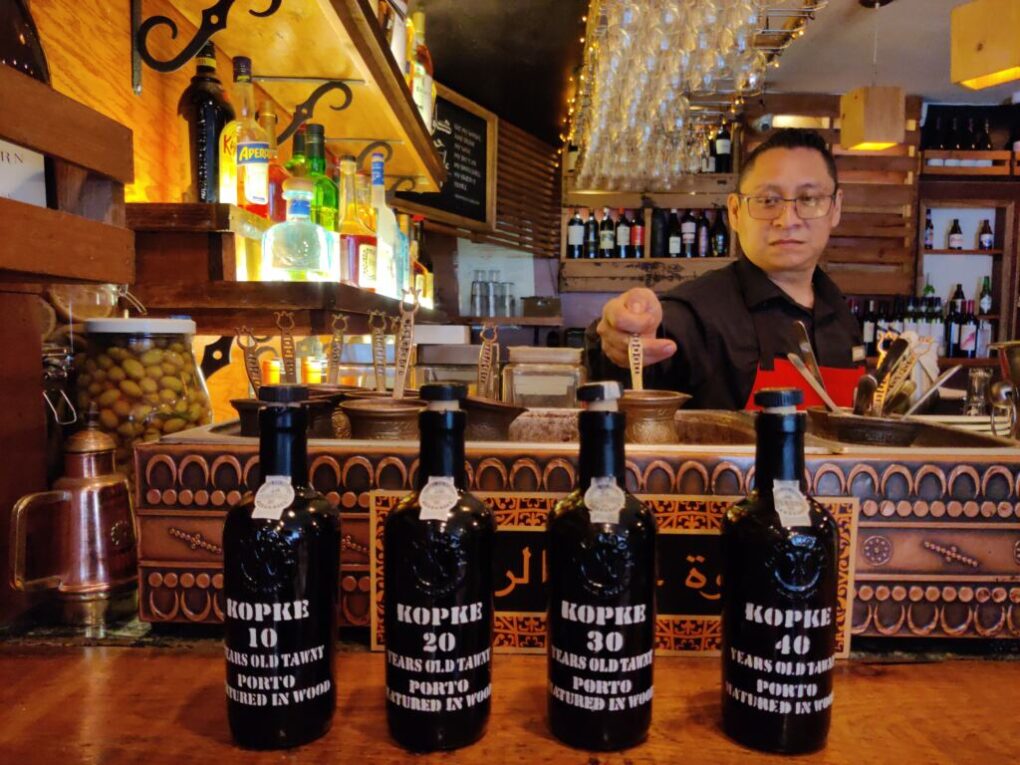
Port wine is a fortified wine produced in Duoro Valley in northern Portugal. The Douro Valley is the oldest demarcated winemaking region in the world. Port wine production can be traced back to the 17th century, when the British established trade relations with Portugal, after developing a taste for the fortified wine. Port wine is highly regarded for its rich flavor, sweetness, and smooth texture, as well as its longevity.
Port wines are crafted using 113 different kinds of Portuguese grapes. Among these Touriga Franca, Touriga Nacional, Tinta Barroca, Tinta Cão, and Tinta Roriz (Tempranillo) are the most common. Fortified wines are produced in other countries around the world including the United States, Canada, France, Spain, India, South Africa, Argentina, and Australia, but European regulations dictate that only fortified wines crafted in Portugal can be labeled as port.
Grapes used to make port wine are harvested before undergoing a relatively short fermentation period, during which the grape sugars are only partially converted into alcohol. Aguardiente (Spanish brandy) is added during fermentation to halt the sugar to alcohol conversion. This fortification process preserves the natural sweetness of the wine, and results in wines that have higher alcohol levels compared to regular table wines.
There are several styles of port wine, including ruby, tawny, white, vintage, and late bottled vintage (LBV). Ruby ports are typically young and vibrant, with intense fruit flavors. Tawny ports are aged in old, used wooden barrels, so that the flavor derived from the wood does not overpower the natural aromas and taste of the grapes. The result are fortified wines with a mellow fruitiness, and nutty character. White ports can range from dry to sweet, and are often enjoyed as aperitifs. Vintage ports are produced only in exceptional years and have remarkable aging potential. LBV ports are aged in barrels for a specific period before bottling and are ready to drink upon release.
Kopke is one of the oldest port wine producers in the region, with a history dating back to 1638, when German diplomat Nicolau Kopkë established Nicolau Kopkë & Co., the world’s first port house. The company was later acquired by the Bohane family, who has managed it for several generations.
Kopke is known for its commitment to producing high-quality ports that showcase the unique characteristics of the Douro Valley. The winery owns vineyards in the region, and also sources grapes from trusted local growers. It has a wide range of port wines in its portfolio, from entry-level options, to premium and rare bottlings.
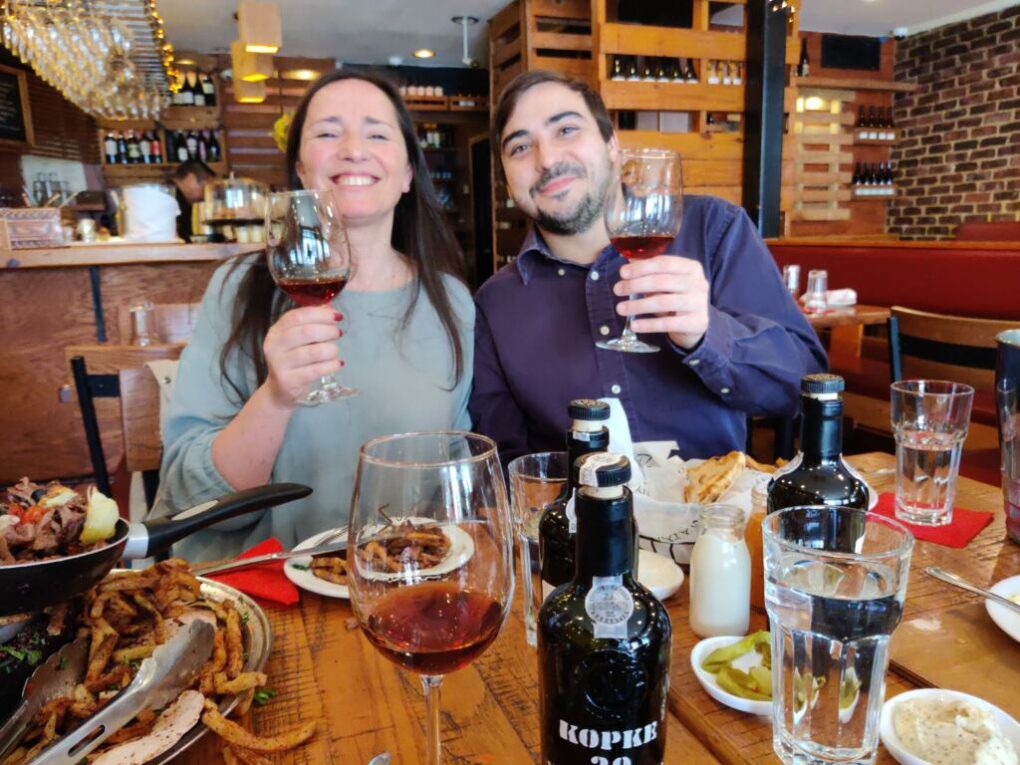
I had the pleasure of trying four tawny port wines with Carla Tiago, lead winemaker at Kopke, and Alejandro Vich, account manager at Deussen Global.
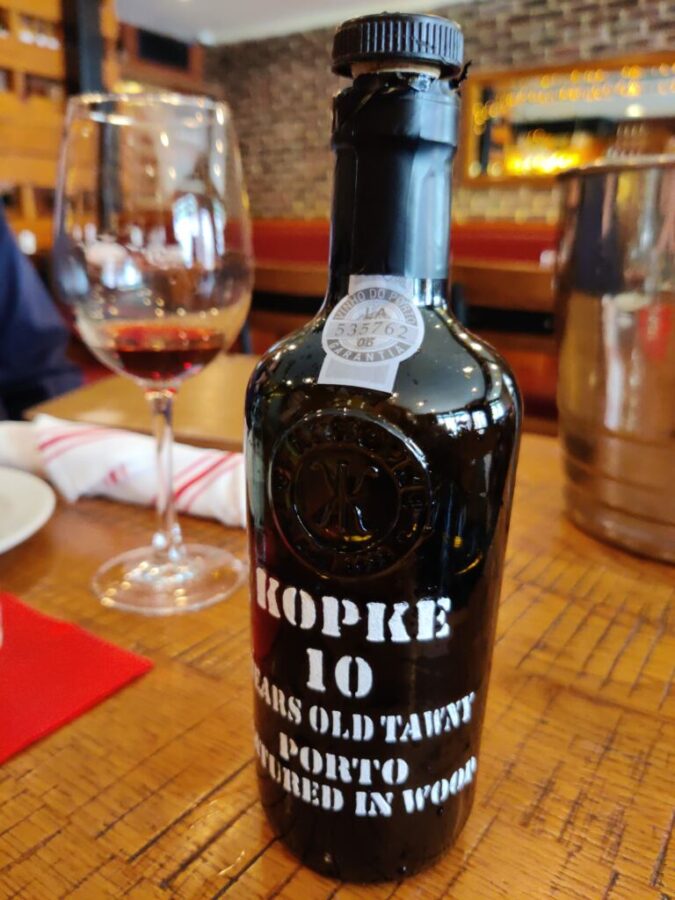
Kopke 10 year-old Tawny (the age on the label of every port wine is determined by taking the average collective age of the wines used to make the particular blend).
Golden color, with an amber rim. Smooth and round, with aromas of ripe fruit, and sweet spice, as well as notes of dried fruit, scented wood, and honey.
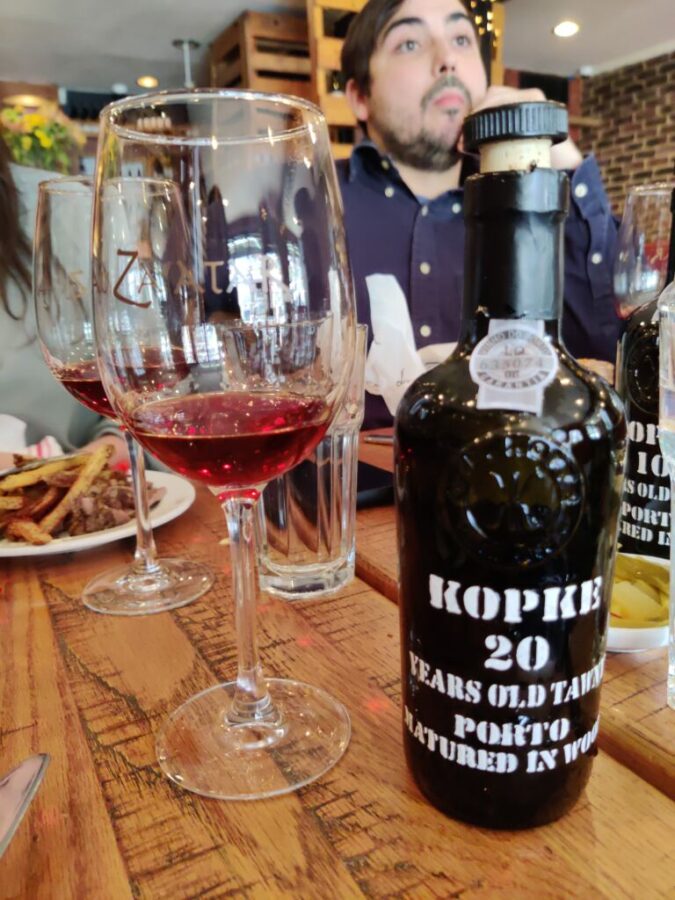
Kopke 20 year-old Tawny
Orange-green color. Rich and concentrated, with a velvety texture, aromas of dried apricot and fig, nutmeg, and hazelnut, and notes of raisins, caramel, prunes, and honey.
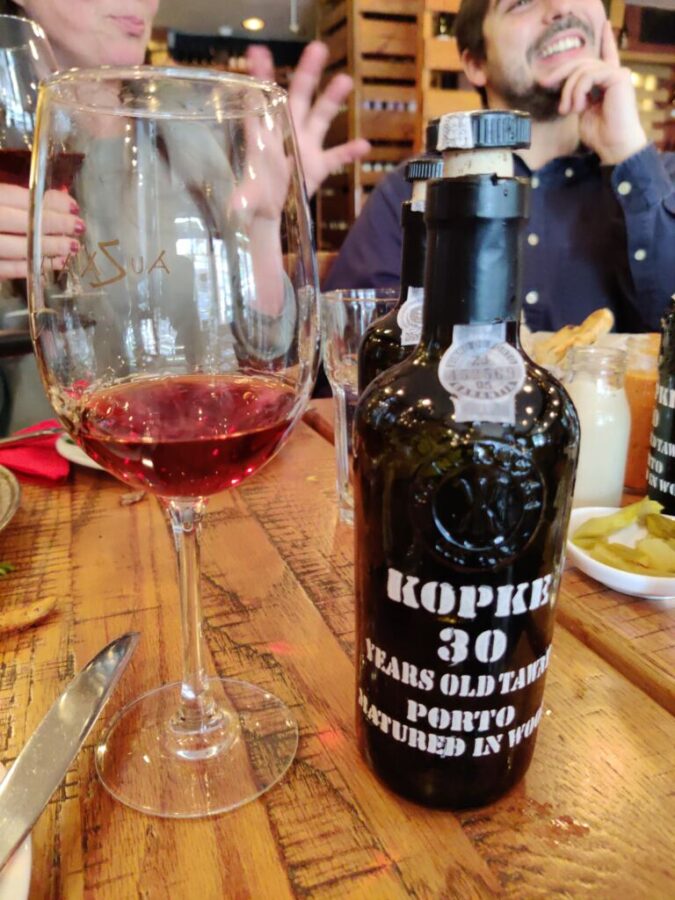
Kopke 30 year-old Tawny
Amber-green in color. Harmonious and complex, with aromas of candied apple, pear, apricot, and ginger, as well as almonds and chocolate, and round notes of dried apricot, fig, and prune, as well as sandalwood, caramel, and vanilla.
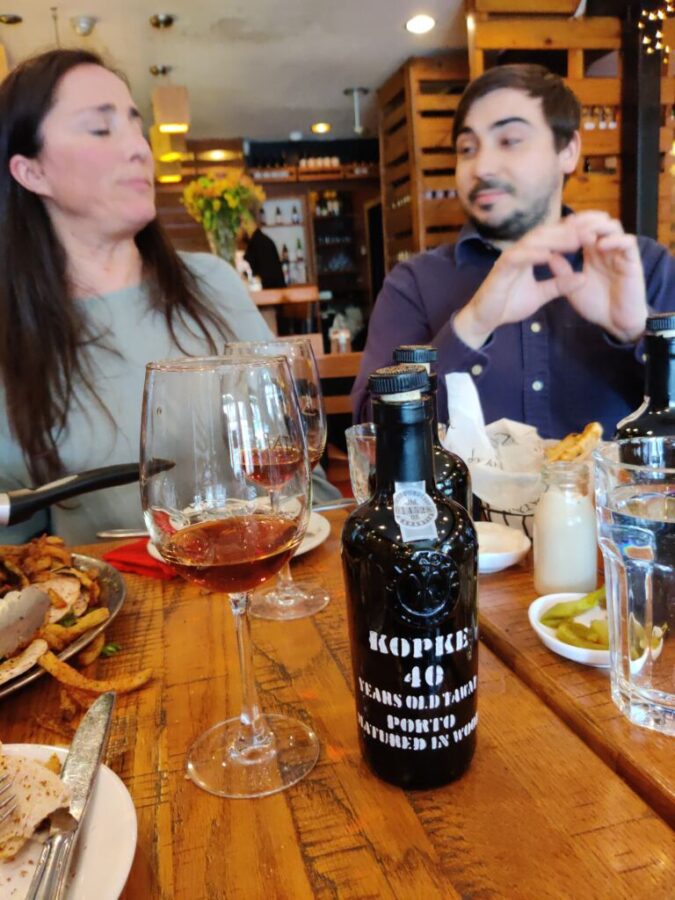
Kopke 40 year-old Tawny
Deep amber color, with a green-tinged rim. Fresh, silky, and concentrated, with aromas of dried citrus and orchard fruit, oak, and honey, and notes of candied orange peel, and dried figs and apricots, as well as toffee, honey, and nuts.
Grapes from select harvests are hand-picked, destemmed, and crushed before undergoing maceration to extract color, tannins, and aromas for every one of the four Kopke port wines we tried. The juice and must are churned regularly during the fermentation process. Fermentation occurs in vats (lagares) at between 28-30°C. The process is halted once the desired sweetness is achieved, after which Aguadiente is added to fortify the wine. The different grapes are converted into wine and matured in oak casks for different intervals before being combined to make each tawny port wine.
These port wines work well with duck pate’, seared foie gras, and eggplant spread, as well as candied walnuts, and crostini topped with goat cheese and nuts.. They also make wonderful complements to desserts such as brownies, chocolate, and pistachio cookies.

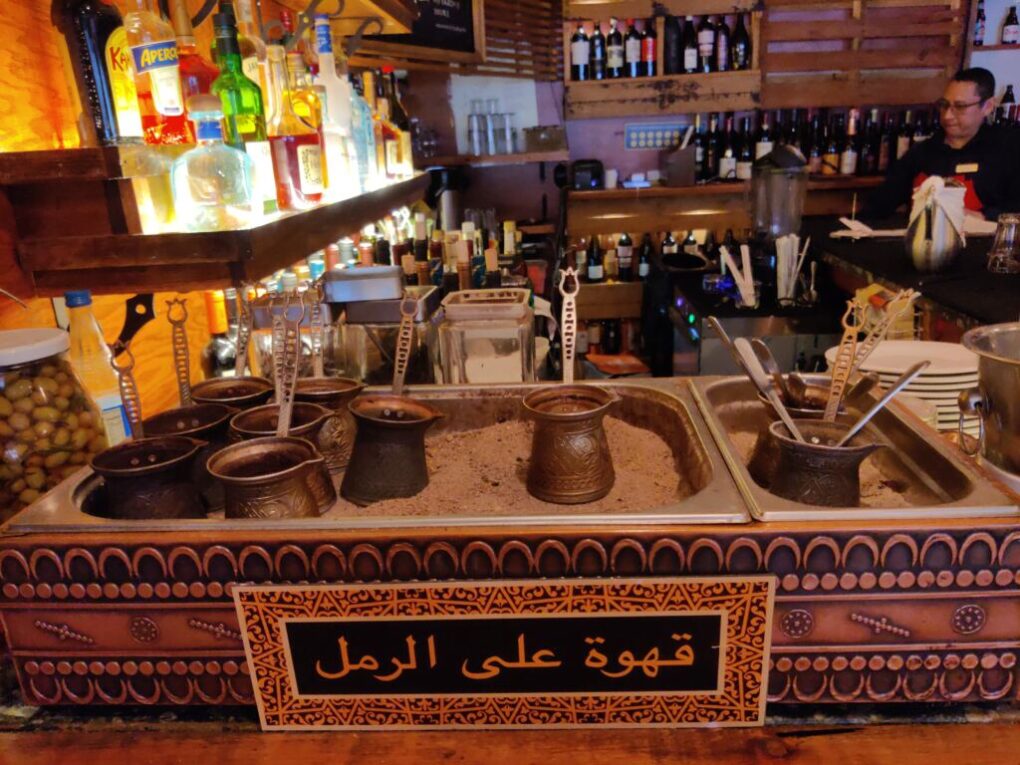
They also paired perfectly with the tower of spicy grilled meat we were served at the Lebanese restaurant Au Za’atar, on the Lower East Side, in New York City. The silky texture and balanced fruitiness of these elegant, honey-sweet wines could not have been a better pairing choice for this Middle Eastern specialty dish. I can imagine these port wines will serve as similarly fine complements to spicy fare from other regions such as China, Thailand, and India.

Be First to Comment